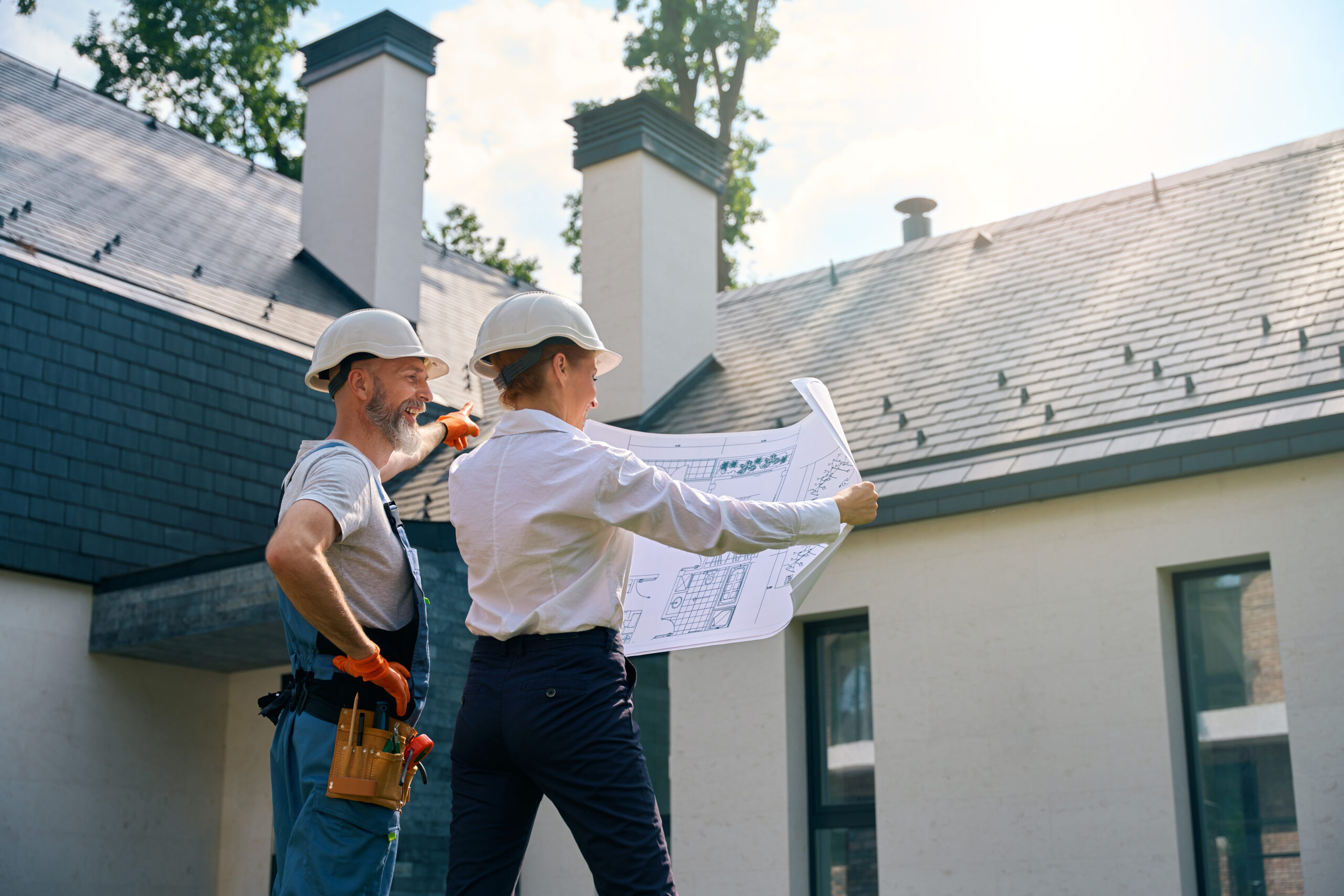Are You Ready to Buy a House in QLD?
Buying a house is a big step, often bringing a mix of excitement and apprehension, but a clear checklist can help simplify the process. By understanding the road ahead, you can make better decisions and not be overwhelmed by the process.
In this article, we provide a step-by-step checklist for both first-home buyers and seasoned investors. It sets a clear roadmap to help you better understand the process and speed up the learning curve involved in buying a house in QLD.

Prepare your Financial Foundation
Buying a house starts with knowing what you can afford. Look at your income, savings, and borrowing power. For instance, individuals usually figure out first if they can afford the standard 20% deposit. This usually allows them to gauge what sort of property they can afford.
However, because of frequent changes in government schemes and lenders terms and conditions, you may only need a 5-15% deposit today. You will need to check with your broker or lender what their requirements are. Now let’s explore this topic further.
Determine your budget
Savings, assets, investments, and regular income are all important for setting your budget. Lenders focus mostly on your ability to repay the loan, so your regular income may matter more to them than assets you own like property or investments. Even if you’re asset-rich with many properties, lenders want assurance that you can meet your monthly repayments.

If you’re looking at a bank loan, you must pass their stress test, which calculates whether you can still afford payments if rates rise. In Australia, the acceptable threshold for mortgage stress is spending around 30% of your pre-tax income on home loan repayments. A mortgage broker will walk you through these calculations to help you determine what sizeable loan is possible to secure.
Shop around for a loan
Take the time to explore your lending options. Compare banks and private lenders to find the best fit for your situation.
Banks typically offer lower interest rates, making them suitable for long-term affordability. Private lenders, on the other hand have higher interest rates, but they provide more flexibility in terms of borrowing capacity, which can be beneficial for individuals with non-traditional income sources or those needing a bigger loan.
Get pre-approved for a mortgage
Once you’ve chosen a lender, securing pre-approval is your next step. This helps you determine exactly how much the lender is willing to lend you so you can make an offer.
A pre-approval is the final step in your loan application. You will have to go through all of the lender’s hoops which involves a large amount of paperwork to demonstrate you can meet the loan repayments, before they approve your loan. But they are preferred by sellers when it comes to selecting their ideal buyer.
Pre-approval provides a competitive edge in the market, signalling sellers that you are a serious and reliable buyer with a solid financial foundation to back your offers. As opposed to those who have not yet organised their finance, or those that have to go through more complex routs, such as being dependent on selling another property to afford a new home purchase.
Shop for Your Dream Home
Now that your finances are sorted, it’s time to find your dream home. This is where you balance what you need, what you want, and what you can afford.
List your must-haves and nice-to-haves. Consider practical aspects like location, size, and type of property. Think about lifestyle factors like proximity to work or schools. While it’s tempting to dream big, keep your budget in mind and be realistic about what’s achievable.

Explore properties using real estate websites and apps. Look into factors that can influence property value and quality of life, like school zones, transport, and local amenities. Knowing market trends will also help you spot good deals and suburbs with higher future potential.
Attend property inspections
Inspecting homes is important so you can see the property’s actual condition, layout, and potential for renovations.
Don’t rush. Look closely at details like structural integrity (cracks in walls or uneven floors) or costly elements that may need to be repaired. It’s also important to consider natural lighting (the direction of windows and amount of sunlight throughout the day), and storage space (built-in wardrobes or pantry size). Everyone has their living preferences, just a reminder to consider what matters to you when you are doing your research.
Later in the process, you should also consider hiring a building and pest inspector to ensure there are no hidden or unseen problems and save yourself from costly surprises.
Consult a Conveyancer
Don’t wait until you’ve made an offer to talk to a conveyancer—reach out as soon as you find a property you’re seriously interested in. Ensuring your financial and legal preparations are aligned from the beginning will help you move forward with confidence.

Your conveyancer protects your interests during the homebuying process. They will review the property’s title, zoning regulations like land use and permitted activities, and other restrictions like covenants or heritage overlays that might affect your plans for the property. Although they are not legally mandatory, it’s always safe to have someone check all the important paperwork before making such a big financial commitment.
They can also spot issues like easements (rights for others to use parts of your property, such as driveways or utility access) or planning restrictions that might affect how you use the property. This can save you trouble later and help you decide if you want to make an offer or negotiate.
Make an Offer
Once you’ve found a property you love, the next step is to put in your offer. Use the results from your property inspections and reports to make confident and informed decisions for the next steps.
Find a reasonable offer price that aligns with your budget and the property’s market value. It is recommended to explore recent sales in the area to give you an idea of what is fair, and what would be considered competitive, especially if you really like the property.
To safeguard your interests, you can make your purchase conditional. Some of the most common and highly effective contract terms are subject to the following clauses:
- Building and Pest Inspection – allows you to back out or renegotiate the purchase price if the inspections reveal significant issues.
- Finance – protects you if your lender denies final approval for the loan, ensuring you’re not financially obligated to complete the purchase.
- Council Approval – allows you to confirm that the proposed changes will meet council regulations before proceeding. This is useful if you plan to renovate or develop the property.

Sellers often receive multiple offers. They usually choose the highest or most appealing one without disclosing other offers to maintain fairness, so it’s difficult to gauge other bids. In some cases, the person who makes the first offer may get a chance to revise it if higher bids come in, but this isn’t guaranteed either.
Negotiate with the seller
Your offer may not be final. Be prepared to negotiate, although flexibility can be limited in highly competitive markets. Factors like settlement dates, deposit amounts, or other conditions can be subject for negotiation and might sway the seller even if your offer isn’t the highest.
Additionally, understanding the seller’s motivations—such as a quick sale or specific conditions—can provide leverage in negotiations. Ask your agent for insights that could help tailor your offer to appeal to the seller.
Auctions sales offer a more transparent process, and you openly bid against other buyers. However, these types of sales can push prices slightly higher because of the competitive atmosphere. Still, the difference is usually smaller compared to private sales.
Start the Legal and Financial Process
Buying a house involves both financial and legal steps that are closely intertwined. After making an offer, it’s important to understand how the financial and legal processes work together to ensure a smooth transition to ownership.
Review your contract and titles
Have your conveyancer review your contract to fully understand the terms of the sale and ensure the property title is free from any complications. A conveyancer’s expertise will guide you through the property purchase process, helping you navigate legal requirements, avoid costly mistakes, and secure a smooth transaction.
Conduct final property inspections
Make sure the property meets your expectations and is free from issues. A thorough building and pest inspection offers crucial insights into the property’s condition and help you avoid unexpected costs or complications after settlement.

Inspectors will help identify structural problems, water damage, pest infestations, and other issues that might not be visible during a standard viewing. If the property has unique features, like a swimming pool, heritage elements, or older structures, consider added specialised inspections to assess their condition and compliance with regulations.
Secure home insurance
Arrange home insurance to protect your new property from any unforeseen events, such as fire, theft, or natural disasters. Your lender will often require proof of insurance before approving the final loan, so don’t miss this step in the process.
Make sure that your home insurance policy is active from the day you sign the contract so that your property is fully covered. This protects your property in case of any damage or loss during the transfer process. Double-check the coverage limits to ensure they match the value of the property.
Finalise your mortgage
At this stage, you will need to complete your mortgage application with the lender and ensure everything is in order for settlement. This includes submitting any final documentation and confirming the pre-approved loan amount, terms, and interest rate.
Stay in contact with your lender to confirm loan approval, repayment schedules, and availability of funds for settlement. Your lender may also provide specific instructions or require certain steps before the settlement can occur, so stay on top of these details, and everything will run smoothly. Early preparation will give you peace of mind and ensure a seamless transition to homeownership.
Pay stamp duty
Stamp duty is a mandatory state government tax that is applied to property purchases. The amount you pay depends solely on the value of the property and the governing authority.
The rate varies by state, so calculate the correct amount based on the Queensland stamp duty rates. You can also check if you are qualified for stamp duty exemptions or concessions, like first-home buyer grants . Use the government online estimator or consult your broker for assistance.
Your stamp duty must be paid before settlement to avoid delays. Often, the amount will be due around the time of settlement. Factor it into your budget to avoid delays, especially because it can be costly.
If you’re not sure where to start, the government has a transfer duty estimator available online, or you can ask your conveyancer for help.
Settle Your Payment
As settlement day approaches, you’ll need to complete the transfer of ownership. This is when you pay the remaining balance of the purchase price, finalise all legal paperwork, and ensure that all funds are in place for the transaction to be completed.

Work closely with your conveyancer or solicitor and the seller’s legal representative to exchange the final documents, sign the transfer of ownership paperwork, and ensure all outstanding conditions in the contract are met. Once everything is in order, the transfer of ownership will be executed, and you’ll officially become the property owner.
With all legal, financial, and contractual steps completed, you’ll be ready to take possession of your new home—congratulations!
Checklist Recap
Buying a house is a long and challenging process. To make it easier to remember all the things you need before getting the property title, here’s a quick checklist to guide you through buying a house in QLD:
- Prepare your financial foundation
- Discover benefits based on your occupation (example: educators, doctors, first home buyers)
- Determine your budget
- Set aside money for a deposit
- Prepare for the lender’s stress test
- Shop around for lending options
- Get pre-approved for a mortgage
- Shop for your dream home
- Define your needs and wants
- Factor your priorities to align with your budget
- Explore properties and research potential neighbourhoods
- Attend property inspections
- Consult a conveyancer
- Make an offer
- Consider the market value of the property and your budget before finalising your offer
- Protect your interests, speak to your broker or lawyer about subjective conditions
- Negotiate with the seller
- Start the legal and financial process
- Review contracts and titles with your conveyancer
- Conduct final property inspections
- Secure home insurance coverage
- Finalise your mortgage application process and submit all required documents
- Pay the stamp duty
- Settle your payment and sign the transfer of ownership
If you need help with documentation, legal review, or going through the entire homebuying process, feel free to reach out. Contact us today, we will be glad to answer your questions.

